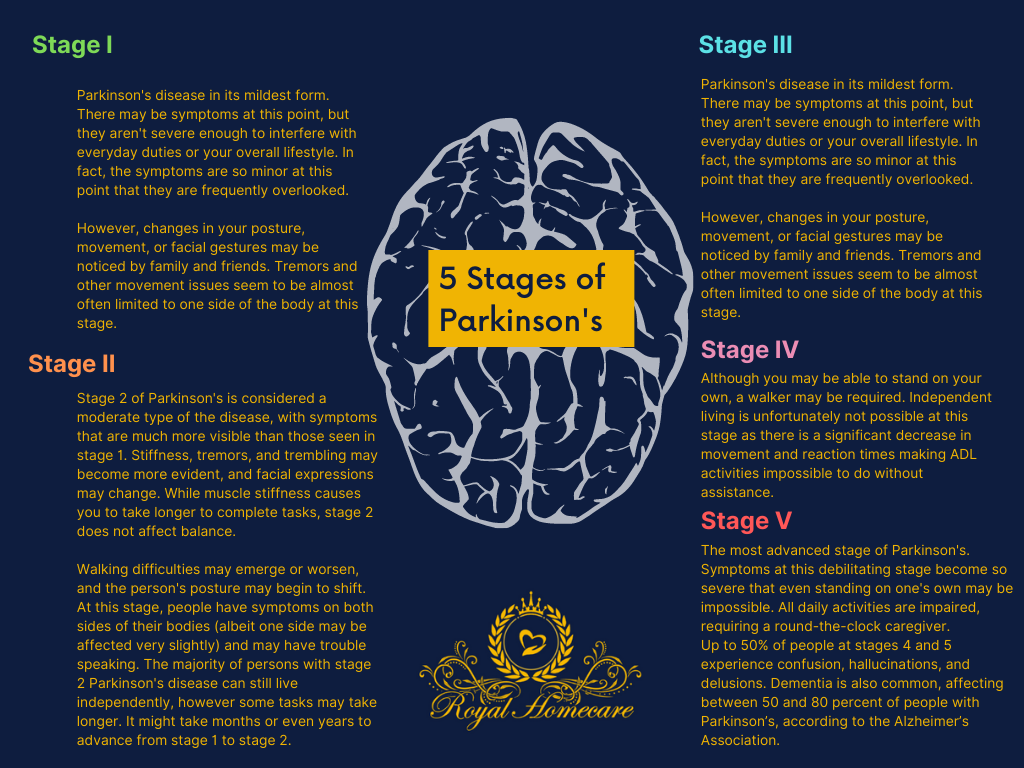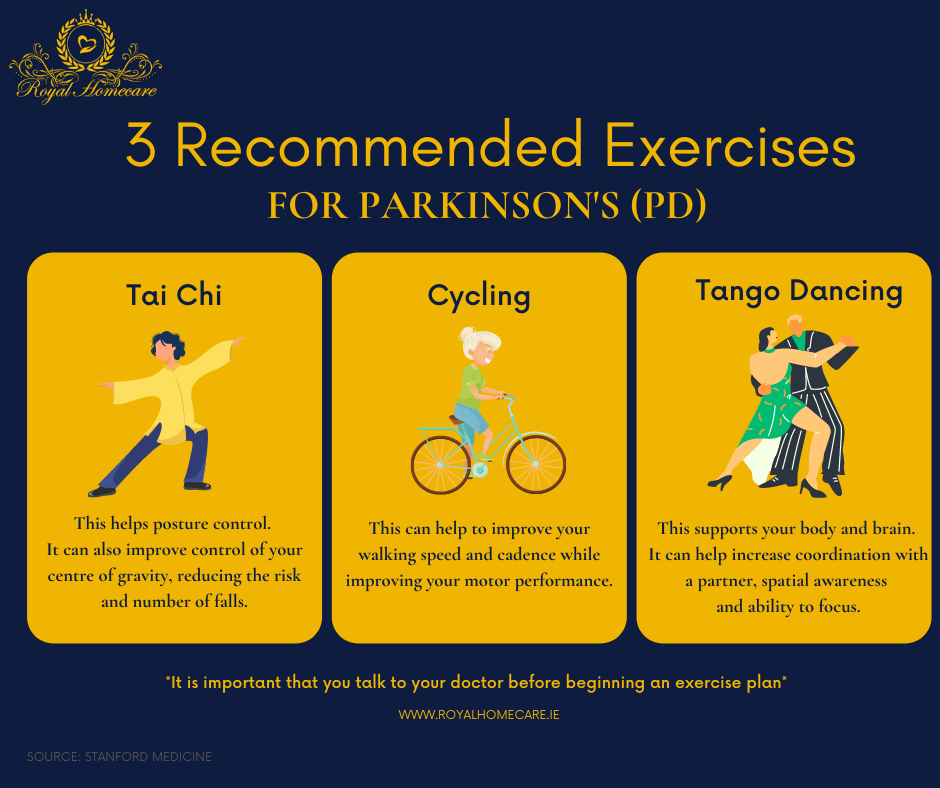Parkinson’s Disease
Parkinson's Disease (PD) is the second most common neurodegenerative condition after Alzheimer's. An estimated 12,000 people in Ireland live with PD. This is projected to rise to 20,000 over the next 15-20 years.
The average age of Parkinson’s diagnosis is 60, and although the majority of people are diagnosed after the age of 60, it is still found in younger people. The youngest age of Parkinson’s is as young as 12 years old.
What is Parkinson’s Disease?
Parkinson's Disease is a progressive neurological condition that causes tremors and stiffness, leading to difficulty walking, balancing, and coordinating.
The average age of Parkinson’s diagnosis is 60, and although the majority of people are diagnosed after the age of 60, it is still found in younger people. The youngest age of Parkinson’s is as young as 12 years old.
What Causes Parkinson’s Disease?
The exact cause of Parkinson’s is yet to be determined. However, scientists believe genetic and environmental factors such as pesticides and herbicides used in farming and traffic or industrial pollution may contribute to the condition.
Parkinson’s involves a loss of nerve cells in the part of the brain called the “substantia nigra”. The nerve cells in this part of the brain produce a chemical called dopamine.
Dopamine is a chemical that plays a vital role in movement and coordination. Still, without enough dopamine, it can cause abnormal brain activity, poor mobility, and other symptoms of Parkinson’s disease.
What Symptoms are Associated with Parkinson’s Disease?
There are various motor and non-motor symptoms associated with Parkinson’s Disease.
There are four cardinal motor symptoms of Parkinson’s:
Bradykinesia: slowness of movement
Rigidity: Stiffness of the arms, legs, or neck
Tremor: trembling or shaking
Postural instability: balance issues
You must have two of the four cardinal symptoms to have a diagnosis of Parkinson's disease.
There are other motor symptoms related to the above cardinal four which include:
Walking or gait difficulty: freezing of gait, festination or shuffling, lack of arm swing
Dystonia
Speech problems: such as hypophonia or soft voice
Swallowing issues: also called dysphagia
There are numerous non-motor symptoms associated with PD; however, according to Stanford Medicine, these are the most common symptoms:
Depression and other mood problems, such as anxiety and apathy
Cognitive issues
Constipation and other gastrointestinal problems
Fatigue
Hallucinations and delusions (also known as psychosis)
Incontinence (both bladder and bowel incontinence)
Low blood pressure problems (also known as orthostatic hypotension, which can cause light-headedness or dizziness)
Sleep (including REM sleep behaviour disorder or RBD)
Other issues such as pain and vision changes
How is it Diagnosed?
It can be difficult to make an accurate diagnosis of Parkinson’s. To reach a conclusion, doctors must carefully evaluate symptoms, family history, and other factors. According to researchers at the Johns Hopkins Parkinson's Disease and Movement Disorders Center, the current standard diagnosis of Parkinson's disease is clinical. That implies no test, such as a blood test, can provide a definitive answer. Instead, specific physical symptoms must be present to diagnose a person with Parkinson's disease. The diagnosis is based on a person’s medical history, answers to specific questions and a physical examination.
People with very early-stage Parkinson's disease may not meet the clinical diagnosis criteria because there is no conclusive screening or test. On the other hand, due to the lack of specificity, you could be labelled with Parkinson's disease only to discover that you have another condition that looks like Parkinson's.
Treatments for Parkinson’s
There are over 40 symptoms of Parkinson’s disease and people’s experiences can vary. Although there is no cure yet or a way of reversing the disease, there are treatments available to relive symptoms and maintain quality of life.
Treatments include:
-
Medications may help with managing problems with walking, movement and tremors. These medications increase or substitute for dopamine.
Mayo Clinic states: You may have significant improvement of your symptoms after beginning Parkinson's disease treatment. Over time, however, the benefits of drugs frequently diminish or become less consistent. You can usually still control your symptoms.
-
Although several nutritional therapies have been proposed as Parkinson’s treatments, none have been proven to be successful. However, it is essential to maintain overall health and consume a nutritious, well-balanced diet.
-
Physiotherapy: Through movement (manipulation) and exercise, a physiotherapist can help you relieve muscular stiffness and joint pain. The physiotherapist's goal is to help you move more easily and enhance your flexibility and walking. They also work to improve your fitness and capacity to maintain your independence.
Speech Therapy: Dysphagia (difficulty swallowing) and speech issues are common in patients with Parkinson's disease. With speaking and swallowing exercises or assistive technology, a speech and language therapist can often help you address these challenges.
Occupational Therapy: An occupational therapist can help you highlight problems in your daily life, such as dressing or going to the shop. They can assist you in devising practical solutions and ensuring that your home is secure and correctly configured for you. This will assist you in preserving your independence as long as possible.
Important: Before attempting a complementary treatment, such as a specific diet, speak with your doctor about the treatment's safety and any adverse effects. Talking with your doctor can assist you in determining whether or not a treatment is both safe and effective. If you are a candidate for medication treatment for Parkinson's disease, complementary therapies should not be used instead of medication.
It can be distressing to learn that you have Parkinson's disease. Many people avoid going to the doctor because they are afraid. On the other hand, taking action early on gives you the best chance of reducing symptoms and decreasing the disease's progression.
If you are looking for caregivers specialised in Parkinson’s Disease, please get in touch.
Royal Homecare Learning Hub - Information Graphs
With April being Parkinson’s Awareness month, we collated information on Parkinson’s to provide our clients, caregivers and followers with information on Parkinson’s. You can click through each graph below.




Disclaimer: This website does not provide medical advice
The information, including but not limited to text, graphics, images and other material on this website, is for informational purposes only. No material on this site is intended to be a substitute for professional medical advice, diagnosis or treatment. Always seek the advice of your physician or another qualified healthcare provider with any questions you may have regarding a medical condition or treatment before undertaking a new health care regimen. Never disregard professional medical advice or delay seeking it because of something you have read on this website.
References
Parkinson’s Foundation
https://www.parkinson.org/understanding-parkinsons/what-is-parkinsons
Stanford Medicine - Stanford Parkinson’s Community Outreach
https://med.stanford.edu/parkinsons/introduction-PD/overview.html
Mayo Clinic - Parkinson’s Disease
https://www.mayoclinic.org/diseases-conditions/parkinsons-disease/symptoms-causes/syc-20376055
NHS - Parkinson’s Disease
https://www.mayoclinic.org/diseases-conditions/parkinsons-disease/symptoms-causes/syc-20376055







